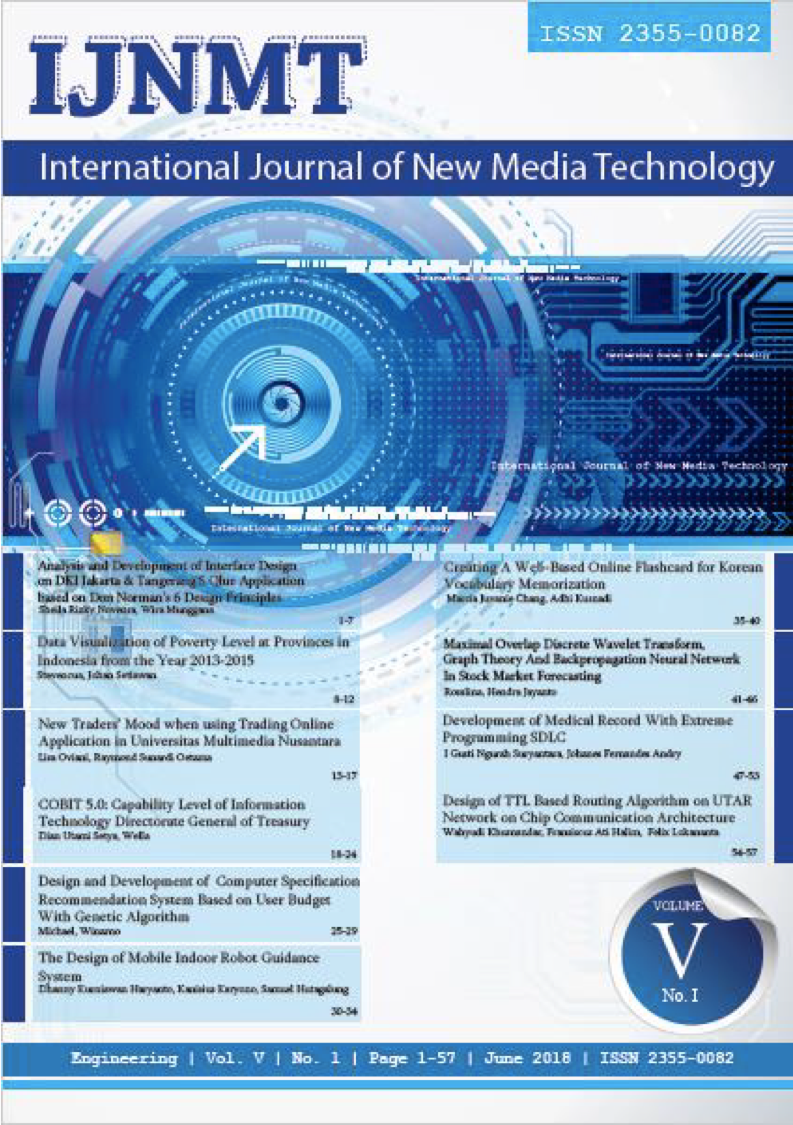Design of TTL Based Routing Algorithm on UTAR Network on Chip Communication Architecture
DOI:
https://doi.org/10.31937/ijnmt.v5i1.738Abstract
XY adaptive routing protocol is a routing protocol used on UTAR NoC communication architecture. This routing algorithm adapts shrotest-path first algorithm, which will forward will not be able to work optimally if the closest route no longer have enough bandwidth to continue the packet. Packet will be stored inside the router and forwarded to the nearest router when closest route has enough bandwidth. This paper suggest TTL based routing algorithm to resolve this issue. TTL based routing algorithm adapts XY adaptive routing protocol by adding several parameters on RTL UTAR NoC and additional bit in each packet sent by router. This additional bit and parameter will be used by TTL based algorithm as additional factors in choosing alternative routes inside the communication architecture. Use of TTL on TTL based routing different from use of TTL on communication network. Packets that carry TTL value that equal to Maximum TTL will be route using XY adaptive routing protocol. TTL based routing algorithm has shown better performance compared to XY adaptive routing on some of the experiment done using MSCL NoC Traffic Pattern Suite. This research also proves that TTL based routing algorithm cannot work optimally on small-scaled architecture.
Keywords”UTAR NoC; XY Adaptive Routing Protocol; MSCL Traffic Pattern Suite; RTL; TTL (keywords)
Downloads
Downloads
Published
How to Cite
Issue
Section
License
Authors retain copyright and grant the journal right of first publication with the work simultaneously licensed under a Creative Commons Attribution-ShareAlike International License (CC-BY-SA 4.0) that allows others to share the work with an acknowledgement of the work's authorship and initial publication in this journal.
Authors are able to enter into separate, additional contractual arrangements for the non-exclusive distribution of the journal's published version of the work (e.g., post it to an institutional repository or publish it in a book), with an acknowledgement of its initial publication in this journal.
Copyright without Restrictions
The journal allows the author(s) to hold the copyright without restrictions and will retain publishing rights without restrictions.
The submitted papers are assumed to contain no proprietary material unprotected by patent or patent application; responsibility for technical content and for protection of proprietary material rests solely with the author(s) and their organizations and is not the responsibility of the IJNMT or its Editorial Staff. The main (first/corresponding) author is responsible for ensuring that the article has been seen and approved by all the other authors. It is the responsibility of the author to obtain all necessary copyright release permissions for the use of any copyrighted materials in the manuscript prior to the submission.















